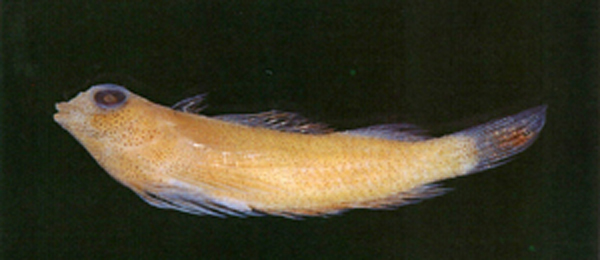| Tripterygiidae (Triplefin blennies), subfamily: Tripterygiinae |
| 3 cm TL (male/unsexed); 2.19 cm SL (female) |
|
reef-associated; marine; depth range 0 - 30 m |
| Pacific Ocean: Taiwan and northwestern Australia to Rapa, south to New Caledonia. |
|
Dorsal spines (total): 14-16; Dorsal soft rays (total): 9-10; Anal spines: 1-1; Anal soft rays: 16-19. Semi-transparent with indistinct oblique pale and dusky bands on the body (Ref. 48636). Males are heavily pigmented under the head. |
| Adults inhabit shallow coastal to outer reef crests and slopes but reported to 30 m depth (Ref. 48636). Also found in high isolated tidal pools and wave-swept tops of lagoon reefs (Ref. 1602). Occasionally found in intertidal pools. Eggs are hemispherical and covered with numerous sticky threads that anchor them in the algae on the nesting sites (Ref. 240). Larvae are planktonic which occur primarily in shallow, nearshore waters (Ref. 94114). Minimum depth of 0 m reported from Ref. 90102. |
|
Least Concern (LC); Date assessed: 03 May 2010 Ref. (130435)
|
| harmless |
Source and more info: www.fishbase.org. For personal, classroom, and other internal use only. Not for publication.

